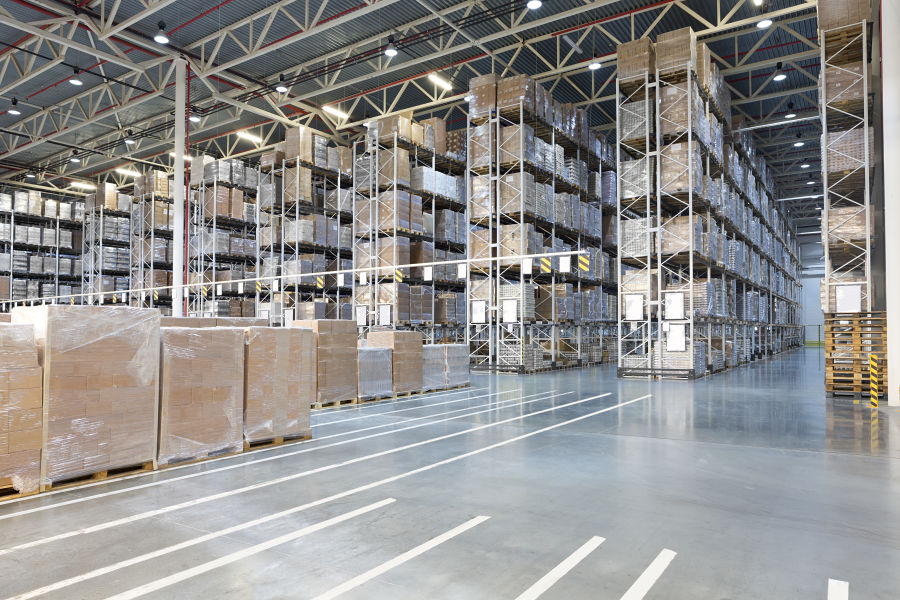No Signs of Slowing
Strong Start: U.S. industrial markets absorbed 56.9 million square feet (msf) in the first quarter of 2018 (Q1 2018), making it the fourth strongest start to a year of the past 30 years; only the record-setting 2016 and prior cycle highs of 2007 and 1999 were stronger. Each U.S. region performed well during the quarter, with the South and West leading absorption gains and the Northeast posting the greatest year-over-year improvement. Absorption in the Midwest remained solid, in line with 2016/2017 tallies. Leasing velocity accelerated in half of the U.S. markets, with more than three-quarters of the country registering net occupancy gains. Demand for U.S. industrial space is expected to remain strong throughout 2018, with quarterly net absorption forecast to average 58.1 msf. While that forecast is lower than the quarterly average of 61.6 msf of actual net absorption in 2017, it is higher than the 56.4 msf of quarterly net absorption of the past seven years.
Broad-Based Gains: Occupancy gains were broad-based in Q1 2018, with logistics product absorbing 51.0 msf, manufacturing footprints expanding by 2.4 msf, and flex growing by 2.9 msf. The Midwest led manufacturing and flex activity, while the West and South regions had the strongest warehouse performance. Logistics-related leasing was driven by the Inland Empire, Pennsylvania I-81/I-78 Distribution Corridor, Atlanta, Central New Jersey, Dallas, Miami and Kansas City; these markets combined accounted for more than half the nation’s warehouse absorption. Chicago, Philadelphia, San Jose, Cincinnati, and Hartford registered the best performance in manufacturing product. For flex space, Salt Lake City, Miami, Detroit, Milwaukee, Pittsburgh, Kansas City, and Minneapolis accounted for nearly 90% of the segment’s growth.
Nowhere to Go: The industrial market continued to tighten in Q1 2018 with vacancy rates falling in two-thirds of the country. At 5.0%, the U.S. overall vacancy rate is a full 330 basis points (bps) below the 10-year historical average of 8.4% for all product types. The tightest U.S. markets include Savannah, Los Angeles, San Francisco, Orange County, Fort Myers/Naples, San Jose, Central New Jersey and El Paso, all of which have headline vacancy rates of 3% or lower. Logistics-related vacancy declined by 10 bps in Q1 2018 despite the delivery of 43.3 msf of speculative warehouse product. Space options are particularly tight in the 100,000-to-250,000-square-foot size segment where new supply has lagged, and leasing demand has recently spiked. Deal volume by tenants taking space in the 250,0000-to-500,000-square-foot segments was up 16.9% in the quarter, while activity in the bulk segment of 500,000-square-feet and above continued to decline gradually from its Q3 2017 peak. The amount of available logistics space and its characteristics will remain a key storyline in 2018: 61.2% of available logistics space is more than 20 years old, and over half of it possesses clear heights below 28 feet. That presents limited options for tenants seeking modern space.
Rents Rising Faster: Rent growth accelerated in Q1 2018, with more room to run. U.S. industrial rents increased 5.4% in Q1 2018 from a year ago, rising in 59 of 79 markets tracked by Cushman & Wakefield; 19 markets reported double-digit gains. Among the regions, year-over-year rent growth was strongest in the South (7.1%) and West (6.0%) and more moderate in the Midwest (4.9%) and Northeast (4.1%). The highest rent growth was in Seattle, Sacramento, San Francisco, Jacksonville, Nashville, Raleigh/Durham and Oakland—all markets where rents increased more than 14% year-over-year. Although overall industrial rents currently stand at a record high of $5.99 per square foot (psf), on an inflation-adjusted basis they remain 4.9% below the level at the height of the last cycle. Strong occupier demand for high-quality space and infill sites capable of supporting omnichannel fulfillment amid a historically tight market mean 2018 is expected to be another year of robust rent growth.
Development Picking Up: New construction starts rose by 3.6% nationally in Q1 2018 with 42 markets reporting development levels increasing quarter-over-quarter. The largest uptick in construction activity occurred in the South and West regions, as is often the case during any first quarter when seasonality limits activity in the Northeast and Midwest. Currently, there is 251.3 msf of industrial product under construction, of which 164.1 msf is speculative. Although five markets—Inland Empire, Dallas, Pennsylvania I-81/I-78 Distribution Corridor, Atlanta, and Central Valley California—account for over one-third of the development pipeline, 47 markets have more than 1 msf under construction. Activity is expected to increase, but increasing construction costs, scarcity of entitled land and labor, discerning lenders, and caution among developers diminished the likelihood that supply will outstrip demand.
Full Speed Ahead
Demand Drivers Look Great: Economic fundamentals remain solid, underpinned by a strong job market. An average of 202,000 new jobs have been created every month in 2018—more than the monthly averages in both 2016 and 2017. Industrial output rose 3.2% in the six months ending February—the largest 6-month growth rate for any period since 2010. Intermodal rail volume—which correlates closely with warehouse demand—rolled to its second highest weekly average ever in February, and March volume following was the strongest March on record. Strength is also evident in U.S. retail sales for March, which recorded an increase in sales at auto dealers, furniture and home stores, and electronic and appliance sellers.
Trade Rhetoric vs. Reality: Trade rhetoric has roiled equity markets and interjected a layer of complexity for logisticians. Trade reality is much different than the rhetoric. Little formal trade policy has taken effect and many countries initially subjected to steel and aluminum tariffs have received exemptions. NAFTA negotiations are showing signs of promise, and recent dialogue between the U.S. and China has taken a more conciliatory tone. Trade policy and geopolitical threats will remain headwinds but a strong job market, rising incomes that allow consumers to purchase more, elevated confidence that emboldens them to spend, and strong corporate earnings that encourage businesses to invest all point to stronger growth in 2018.
OUTLOOK:
- Demand drivers point to growth in 2018 with strong absorption in markets with sufficient supply and robust rent growth in markets facing supply constraints.
- We forecast total retail and food sales to accelerate to 5.2%, and for eCommerce sales to grow by 16.4%, in 2018.
- Net absorption is expected to surpass 230 msf in 2018 for the third year in a row, and eclipse 200 msf in 2019 for a sixth year.
- Developers will exercise caution, with deliveries modestly outpacing demand, allowing vacancy rates to hover in the 5%range through 2018/2019.
- Rent growth will remain strong in 2018, softening slowly late in the year with rent growth gradually decelerating in 2019.






